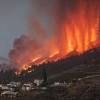expert reaction to all the flooding and flood warnings across ...
January 5, 2024
Scientists react to flood warnings issues in England and Wales following recent storms.
Dr Emily Wallace, Met Office Fellow in Climate Extremes, said:
“Although observations show large variability in annual, seasonal, and decadal rainfall, there has been a marked increase in winter rainfall in the most recent decade with 2014, 2016 and 2020 all in the top five wettest (the other winters being 1995 and 1990).
“As the atmosphere warms due to human induced climate change it can hold more moisture, at a rate of around 7% more moisture for every degree of warming. On a simple level, this explains why in many regions of the world projections show an increase in precipitation as a consequence of human induced climate change.
“In the future, climate projections for the UK indicate there being a greater risk of heavy precipitation and prolonged events in the future, particularly during winter.”
Dr Christian Dunn, Chair of the British Ecological Society Welsh Policy Group and Reader at Bangor University, said:
“The recent flooding has highlighted the perfect storm we are facing in the UK, as the climate changes and the disastrous management of our landscapes takes effect.
“Nature provided us with an answer to prevent flooding – wetlands.
“These marshes, bogs and fens act as giant sponges – soaking up vast amounts of rain water during the wetter months and releasing it during drier periods.
“Since the 1700s though the UK has lost 75% of these vital water management habitats.
“We’ve dug up our peatlands, we’ve drained our marshes and we’ve built on our riparian buffers and flood plains.
“And now, with the changing weather patterns potentially increasing the likelihood of heavy rainfalls we have no natural protection from the effects of flooding.
“If we want to stop our villages, towns and cities from being underwater every time we have a storm, we need to manage and conserve our country’s existing wetlands and we need to create more of them.
“These so called Nature-based Solutions are at the frontline of our defense against flooding and we need to increase our protection of them at nothing short of war-level footing.”
Dr Jess Neumann, Associate Professor of Hydrology at the University of Reading, said:
“With the ground already saturated and rivers swollen from ongoing wet weather, communities should take steps now to adapt to flooding. Having an emergency preparedness plan and flood kit ready can help save lives and property.
“Specifically, people should check government websites and local media for the latest weather alerts and flood warnings. Make sure you know evacuation routes and shelter locations in case an order is given to leave the area.
“Gather supplies for an emergency flood kit – this should include drinking water, non-perishable food, flashlight, battery-powered radio, extra batteries, first aid kit, prescription medications, blanket, gloves, sturdy waterproof boots, water purification tablets, and personal hygiene items. Charge mobile phones and any battery-powered devices.
“Protect your home by moving valuable items and electronics to higher levels in your house. Clear debris from gutters. Review your insurance policy and coverage.
“If rising floodwaters threaten your home, make sure you know how to quickly shut off electricity, gas, and water supplies. Unplug small appliances beforehand. Have accessible items like sandbags, plywood, plastic sheeting, and lumber on hand to help prevent water entry.
“Check on elderly neighbours, those with mobility issues, and others who may need additional assistance preparing or evacuating in the event flooding occurs. Make sure they have a way to receive alerts and have their emergency kit ready to go.”
Prof Hannah Cloke, Professor of Hydrology at the University of Reading, said:
“The decorations have been taken down but the flood warning map of England is currently lit up like a Christmas tree.
“Storm after storm this autumn and winter has made Britain a sopping wet sponge and there is nowhere for any extra rain to go.
“After Storm Henk formed late in the Atlantic and hit us on January 2, all that extra water is running straight off the landscape and our rivers are swelling up like the beautiful monsters they can be.
“Forecasts suggest we will have some respite from the rain by the weekend. The sun may come out but the waters could still be rising, so everyone should be checking for flood alerts.
“People should be very careful not to drive or walk through flood water. It is extremely dangerous. Even if you see other people doing it, don’t follow them. You should stop and turn around. The water may look shallow there, but it doesn’t take much to float a car and you could easily be swept away.
“Unfortunately in these extreme conditions, and due to the creaky nature of our sewers, there will be raw sewage getting into the water everywhere. It is a reminder that we need to invest a lot more into our water system to deal with increasing risks of flooding in the years ahead, which we know is likely to get worse.
“Mild, warmer winters, heavier downpours of rain, and storms that hit us week after week are all examples of the impacts of climate change that are increasingly affecting the UK right now. This should be a reminder of the need to adapt our cities and infrastructure to deal with this hotter, more hazardous climate. It shows a small taste of the enormous costs we are building up in the years ahead if we fail to bring down emissions fast enough.”
Prof Rick Stafford, Chair of the British Ecological Society Policy Committee and Professor at Bournemouth University, said:
“While we are seeing an increased intensity of rainfall, as a result of climate change, we are also not utilising nature sufficiently to help mitigate the risk of floods. Nature-based solutions, such as restoring peatbogs and wetlands, or planting trees in some upland areas, can help regulate the flow of rainwater to rivers and prevent flood risks. Some of these measures can also boost biodiversity and help capture carbon from the atmosphere and can be a real win-win situation for people and nature.”
The UK Centre for Ecology and Hydrology (UKCEH) also provided the following information which you can quote from if you want:
- For the UK as a whole, the period between July and December 2023 was the wettest on record (dating from 1890). Autumn rainfall (Sept-Nov) for UK was 22% above average, followed by a wet December (which saw 70% above average rainfall for some areas in central & northern England and eastern Scotland).
- Since autumn, we have seen quite unsettled weather patterns, meaning multiple low-pressure systems have led to wind and rain, and the ground in many places has become saturated over this time, meaning the continued and repeated rainfall has led to flooding.
- 43% out of 800 gauging locations in England and Scotland had exceptionally high river flows during December, compared to the December monthly norm, while 71% out of the 800 locations had notably or exceptionally high flows. (Data from the UK Water Resources Portal.)
- In December, provisional data shows some rivers had their highest flows on record of any month including the River Itchen in Southampton (which recorded a flow double its previous record); Abhainn a’Chnocain at Elphin, Sutherland; Congresbury Yeo at Iwood, Somerset; the Stinchar at Balnowlart, Ayrshire; the Swift at Churchover, Warwickshire; and the Parrett at Chiselborough, Somerset.
- Extensive geographic area affected, indicated by no. of Flood Alerts and Warnings: as of 09:00 on Wednesday 3 January 2024, nearly 700 were in force in England and Wales. This is comparable with storm Dennis in February 2020 when there were over 600 Flood Alerts and Flood Warnings (>2300 properties flooded while >25000 successfully protected).
- Henk is the 8th named storm since September – that’s already the highest number of storms affecting the UK to be named by the Met Office in a year since they started naming them in 2015. (NB the storm ‘year’ runs from Sept to Aug.)
- The Met Office forecast suggests that following the period of unsettled weather, whilst scattered heavy showers are still possible, it is likely to be drier and less windy than of late, which will allow this excess of water to move through the river systems.
- The most recent Hydrological Outlook shows for December-February normal river flows are expected in most western areas. For eastern areas, river flows are likely to be normal to above normal, with higher likelihood of above normal in parts of southern England and eastern Scotland.
- UKCEH is expecting to publish the January-March Hydrological Outlook for the UK on 10 January 2024. A full review of the December 2023 hydrological situation will be available in our Hydrological Summary for the UK, published on 15 January 2024.
Declared interests
Emily Wallace: No declarations of interest
No reply to our request for DOIs has been received.


 United Kingdom
United Kingdom Argentina
Argentina  Australia
Australia  Austria
Austria  Brazil
Brazil  Canada
Canada  Germany
Germany  Ireland
Ireland  Italy
Italy  Malaysia
Malaysia  Mexico
Mexico  New Zealand
New Zealand  Poland
Poland  South Africa
South Africa  United States
United States 





















